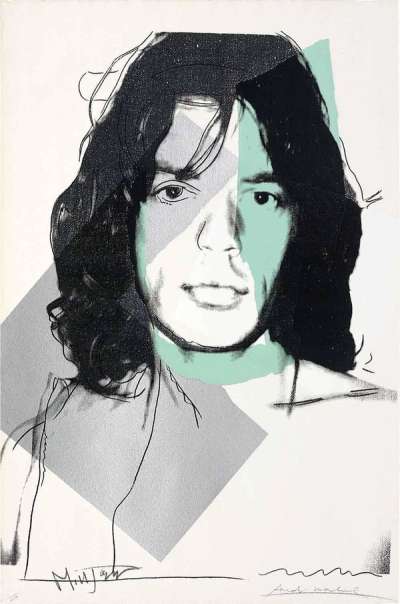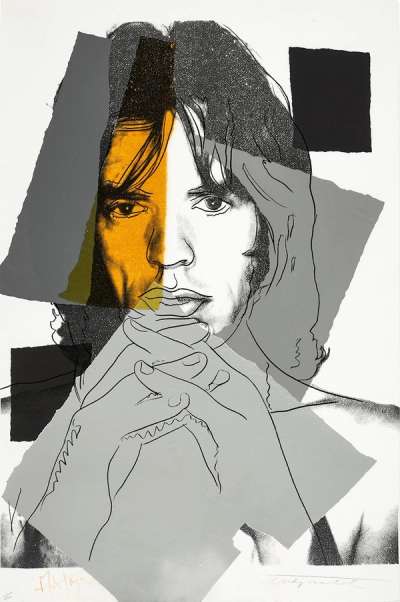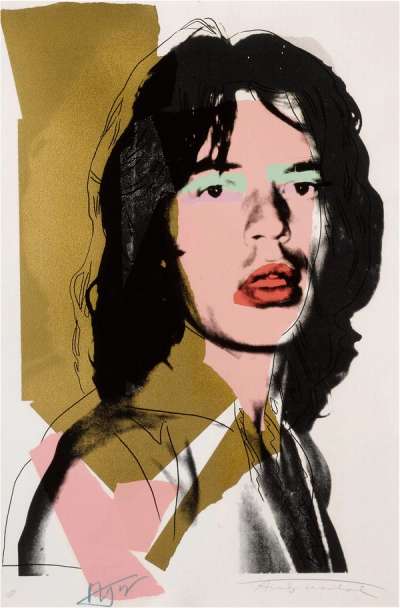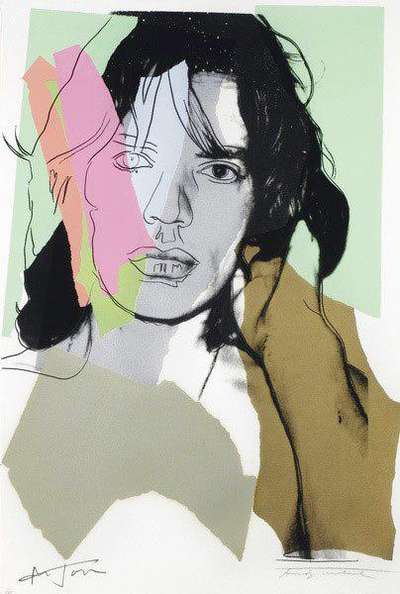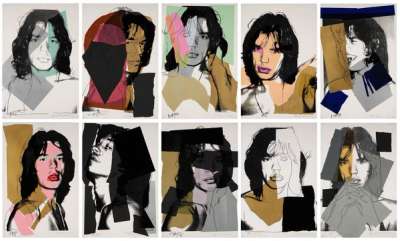
Mick Jagger (F. & S. II.146)

Mick Jagger (F. & S. II.146)
Signed Print
Andy Warhol
£70,000-£100,000Value Indicator
$140,000-$200,000 Value Indicator
$130,000-$180,000 Value Indicator
¥640,000-¥920,000 Value Indicator
€80,000-€120,000 Value Indicator
$680,000-$980,000 Value Indicator
¥13,350,000-¥19,070,000 Value Indicator
$90,000-$130,000 Value Indicator
AAGR (5 years) This estimate blends recent public auction records with our own private sale data and network demand.
There aren't enough data points on this work for a comprehensive result. Please speak to a specialist by making an enquiry.
Medium: Screenprint
Edition size: 250
Year: 1975
Size: H 110cm x W 73cm
Signed: Yes
Format: Signed Print
TradingFloor
Track this artwork in realtime
Watch artwork, manage valuations, track your portfolio and return against your collection
Track auction value trend
Auction Results
| Auction Date | Auction House | Location | Hammer Price | Return to Seller | Buyer Paid |
|---|---|---|---|---|---|
| October 2024 | Sotheby's New York | United States | |||
| April 2024 | Wright | United States | |||
| November 2023 | Van Ham Fine Art Auctions | Germany | |||
| October 2022 | Christie's New York | United States | |||
| July 2022 | Christie's London | United Kingdom | |||
| June 2022 | Van Ham Fine Art Auctions | Germany | |||
| June 2022 | Lempertz, Cologne | Germany |
Meaning & Analysis
In Mick Jagger (F. & S. II.146), Andy Warhol depicts rocker and Rolling Stones lead Mick Jagger in headshot. For this edition of 250, Warhol has adapted his polaroid of Jagger by obstructing half of his face with white. Warhol has then drawn the details of Jagger’s features back into the composition. Both Jagger and Warhol have signed the bottom of the composition, highlighting the collaborative nature of the pair’s relationship.
This image comes from Warhol’s larger series Mick Jagger, featuring ten images of the iconic singer. Warhol photographed Jagger for the series while the Jagger family stayed at his Montauk home in the summer of 1975. The Pop artist went on to produce ten screen prints of the rocker, which have become some of his most valuable portfolios since. Jagger and Warhol collaborated on the album cover for Sticky Fingers, the Rolling Stones’ 1971 studio album and remained friends until Warhol’s death in 1987.
Andy Warhol was a leading figure of the Pop Art movement and is often considered the father of Pop Art. Born in 1928, Warhol allowed cultural references of the 20th century to drive his work. From the depiction of glamorous public figures, such as Marilyn Monroe, to the everyday Campbell’s Soup Can, the artist challenged what was considered art by blurring the boundaries between high art and mass consumerism. Warhol's preferred screen printing technique further reiterated his obsession with mass culture, enabling art to be seen as somewhat of a commodity through the reproduced images in multiple colour ways.

